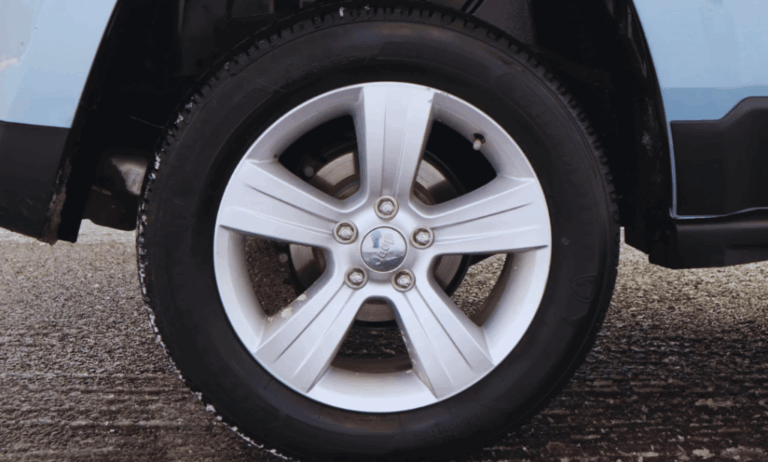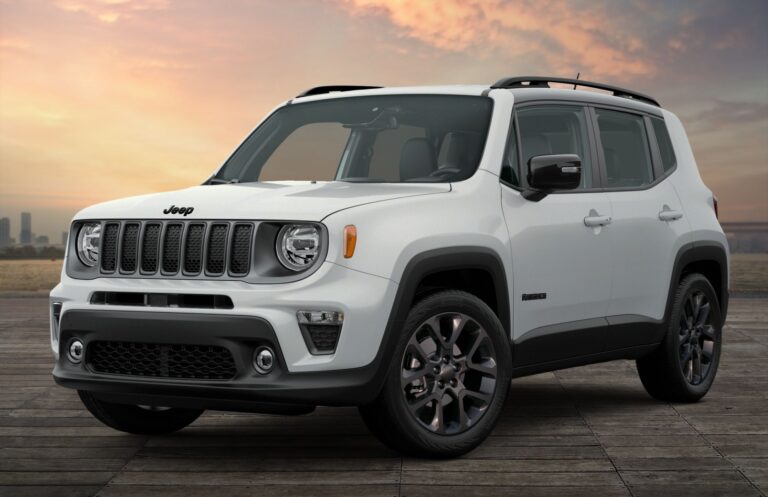Jeep 1979 CJ5 For Sale: A Comprehensive Buyer’s Guide to an Enduring Icon
Jeep 1979 CJ5 For Sale: A Comprehensive Buyer’s Guide to an Enduring Icon jeeps.truckstrend.com
The allure of a classic vehicle transcends mere transportation; it’s about owning a piece of history, a symbol of an era, and an embodiment of enduring design and capability. Among the pantheon of iconic American automobiles, the Jeep CJ5 holds a special, almost mythical, status. And for many enthusiasts, the Jeep 1979 CJ5 For Sale represents a unique opportunity to acquire one of the most beloved and rugged iterations of this legendary off-roader.
More than just a utility vehicle, the 1979 CJ5 is a testament to uncompromised adventure. It’s a machine built for purpose, with a no-frills attitude that appeals to purists and those seeking an authentic driving experience far removed from modern complexities. Whether you dream of tackling rocky trails, cruising beach roads, or simply owning a distinctive piece of automotive Americana, understanding what to look for when a Jeep 1979 CJ5 For Sale appears on your radar is paramount. This comprehensive guide will equip you with the knowledge needed to navigate the exciting journey of acquiring your very own vintage CJ5.
Jeep 1979 CJ5 For Sale: A Comprehensive Buyer’s Guide to an Enduring Icon
The Enduring Legacy of the 1979 Jeep CJ5
The CJ, or "Civilian Jeep," lineage traces its roots directly back to the military Willys MB, the vehicle that helped win World War II. By 1979, the CJ5 had been in continuous production for nearly three decades, evolving but retaining its fundamental, go-anywhere DNA. The 1979 model year falls squarely within the "AMC era" of Jeep production, benefiting from a range of robust engines and improvements over earlier versions, yet still embodying the classic short-wheelbase, open-air design that defines the CJ5.
Key characteristics of the 1979 CJ5 include its solid axles, leaf spring suspension, and choice of reliable AMC powertrains. Common engine options were the 258 cubic inch (4.2L) inline-six, renowned for its torque and dependability, and the more powerful 304 cubic inch (5.0L) V8, offering a significant boost in performance. Paired with manual transmissions (often the T150 or later T176) and a sturdy transfer case (like the Dana 20 or Dana 300), these Jeeps were built to conquer. Their compact dimensions and excellent approach/departure angles made them legendary off-roaders, while their unmistakable styling cemented their place as cultural icons. This blend of heritage, capability, and timeless appeal makes the prospect of finding a Jeep 1979 CJ5 For Sale so exciting for collectors and adventurers alike.
What to Look For When Buying a 1979 CJ5: Key Considerations
Acquiring a vintage vehicle like a 1979 CJ5 requires a keen eye and a thorough inspection. Unlike modern cars, these Jeeps are often bought for their character and potential, meaning their condition can vary wildly. Here’s a detailed breakdown of critical areas to examine:
-
Body and Frame (The Rust Battleground): This is arguably the most crucial inspection point. CJ5s are notorious for rust, especially in areas where water and dirt collect.
- Frame: Inspect the entire frame, paying close attention to the rails, especially near the body mounts, spring hangers, and behind the front and rear wheels. Look for excessive surface rust, flaking, or, worse, perforations and previous patch jobs. A bent or severely rusted frame can be a deal-breaker.
- Body: Common rust spots include the floorboards (especially under the pedals and seats), rocker panels, front fenders (near the headlights and wheel wells), rear quarter panels, and the tailgate. While reproduction body panels are available, extensive rust repair can be costly and time-consuming.
- Windshield Frame & Cowl: Check for rust around the windshield hinges and the cowl area, as water leaks here can lead to interior rust.
-
Engine and Drivetrain:
- Engine: Identify whether it’s the 258 I6 or 304 V8. Look for obvious leaks (oil, coolant), listen for unusual noises (knocking, ticking, excessive exhaust leaks), and check the exhaust for excessive blue (oil), white (coolant), or black (rich fuel) smoke. Check the condition of hoses and belts.
- Transmission: Test all gears, including reverse. Listen for grinding or difficulty shifting. Manual transmissions should engage smoothly.
- Transfer Case: Engage 2WD, 4-High, and 4-Low. Listen for grinding or clunking. Ensure it shifts easily between modes.
- Axles: Check for leaks around the differential covers and axle shafts. Listen for whining or clunking noises during a test drive.
-
Suspension and Steering:
- Leaf Springs: Check for sagging, broken leaves, or excessive rust. Worn springs can lead to a harsh ride and poor handling.
- Shocks: Look for leaks or damage.
- Steering: Check for excessive play in the steering wheel. This could indicate worn tie rods, drag link, ball joints, or a worn steering box. A small amount of play is normal for a vintage Jeep, but too much is a safety concern.
-
Brakes:
- Test the brakes thoroughly. The 1979 CJ5 typically had front disc brakes and rear drums. Ensure the pedal is firm and the Jeep stops straight without pulling. Check for leaks in brake lines or master cylinder.
-
Electrical System:
- Test all lights (headlights, taillights, turn signals, brake lights), wipers, horn, and gauges. Look for frayed or aftermarket wiring, which can indicate previous electrical issues.
-
Interior and Accessories:
- Seats are often worn or torn, but easily replaceable. Check the dashboard for cracks and ensure gauges are functional.
- Soft tops or hardtops: Check for rips, tears, and condition of zippers/windows. These can be expensive to replace.
-
Documentation:
- Always ensure the vehicle has a clear title that matches the VIN. Ask for any available service records or documentation of modifications.

Where to Find a 1979 CJ5 For Sale
Finding the right Jeep 1979 CJ5 For Sale requires patience and knowing where to look.
- Online Marketplaces: Websites like Craigslist, Facebook Marketplace, and eBay Motors are popular starting points. Be wary of scams and always verify sellers.
- Specialized Classic Car Sites: Bring a Trailer, Hemmings, and classic car specific dealerships often list higher-quality or restored examples.
- Jeep Forums and Clubs: Dedicated Jeep CJ forums (e.g., CJ-7.com, IH8MUD for broader 4×4 discussion) and local Jeep clubs are excellent resources, often listing vehicles for sale by enthusiasts who know their Jeeps well.
- Auctions: Online and in-person automotive auctions can sometimes yield good finds, but thorough pre-inspection is even more critical here.
- Word-of-Mouth: Let friends, mechanics, and local enthusiasts know you’re looking. Sometimes the best deals come from private sellers who aren’t actively advertising.
Understanding Condition and Valuation
The price of a Jeep 1979 CJ5 For Sale varies dramatically based on its condition, originality, and modifications. It’s helpful to categorize them:
- Project Vehicle: These typically require extensive mechanical, body, and interior work. They are the most affordable but demand significant time, money, and expertise.
- Driver Quality: These Jeeps run and drive, are generally safe, but will have cosmetic flaws, minor mechanical issues, or need general maintenance. They can be enjoyed immediately while being gradually improved.
- Nicely Restored/Customized: These have often undergone significant work, either a full restoration to original specifications or a well-executed custom build for off-roading or street cruising. They command higher prices but offer more immediate enjoyment.
- Show Quality: These are meticulously restored to factory specifications, often winning awards. They are the most expensive and rare.
Factors influencing price include the presence of the desirable V8 engine, originality versus modifications, the extent of rust, overall mechanical health, and geographical location (dry climates often yield less rusty examples).
Tips for a Successful Purchase
- Pre-Purchase Inspection (PPI): This is non-negotiable for a vintage vehicle. If you’re not an expert, hire a reputable mechanic specializing in classic cars or 4x4s to perform a thorough inspection.
- Test Drive: Drive the Jeep on various surfaces if possible. Listen for strange noises, check the brakes, steering, and transmission. Ensure 4WD engages properly.
- Negotiate: Always be prepared to negotiate. Use any identified flaws as leverage.
- Verify VIN: Ensure the VIN on the vehicle matches the title and any other documentation.
- Budget for the Unexpected: Even the best inspections can miss things. Always set aside an additional budget for immediate repairs or unforeseen issues.
- Insurance and Registration: Research classic car insurance options, which can be more affordable than standard policies for vintage vehicles. Understand your state’s registration requirements for older vehicles.
Potential Challenges and Solutions
Owning a vintage Jeep comes with its unique set of challenges, but most have readily available solutions:
- Rust: The most significant challenge. Solutions range from simple patch panels and rust converters for surface rust to complete body-off restorations for severe structural rust. Many aftermarket companies offer full replacement body tubs and frames.
- Parts Availability: Fortunately, the CJ5 benefits from strong aftermarket support. Most mechanical parts are readily available, and a surprising number of body and trim pieces can be sourced new or used. Online retailers and specialized Jeep parts suppliers are invaluable resources.
- Mechanical Issues: Expect some, especially if not buying a fully restored example. Regular maintenance and a willingness to learn basic mechanics are beneficial. Many mechanical components are straightforward to work on for the DIY enthusiast.
- Fuel Economy: Don’t expect great MPG. These are old-school vehicles with inefficient engines by modern standards.
- Safety Features: Minimal compared to modern vehicles. No airbags, ABS, or advanced driver-assistance systems. Drive defensively and be aware of its limitations.
- Ride Comfort: A vintage CJ5, especially with leaf springs, will have a stiffer, less refined ride than modern SUVs. It’s part of its character.
Estimated Price Guide for a 1979 Jeep CJ5 For Sale
The following table provides a general estimate for the price of a 1979 Jeep CJ5 based on its condition. Prices can vary significantly based on location, specific modifications, and seller motivation.
| Condition Category | Description | Estimated Price Range (USD) |
|---|---|---|
| Project Vehicle | Non-running, significant rust, major mechanical issues, incomplete. Requires a full restoration. | $3,000 – $7,000 |
| Driver Quality | Runs and drives, generally safe and operational, but has cosmetic flaws, minor mechanical needs, and some rust. Can be enjoyed as-is or gradually improved. | $8,000 – $18,000 |
| Nicely Restored | Mechanically sound, minimal to no rust, presentable paint and interior. May have tasteful modifications (e.g., suspension lift, modern engine swap) or be restored to near-original condition. Ready to enjoy. | $19,000 – $35,000+ |
| Show Quality | Meticulously restored to factory specifications or a flawless custom build. Pristine condition throughout, often trailered to shows. Represents the top tier of CJ5 ownership. | $35,000 – $60,000+ |
Frequently Asked Questions (FAQ)
Q: What engines were available in the 1979 CJ5?
A: The most common engines were the AMC 258 cubic inch (4.2L) inline-six and the AMC 304 cubic inch (5.0L) V8.
Q: Is it difficult to find parts for a 1979 CJ5?
A: No, generally parts availability is excellent. Due to the CJ5’s long production run and popularity, there’s a strong aftermarket for both mechanical and body components.
Q: What should I budget for a decent 1979 CJ5?
A: For a "driver quality" CJ5 that you can enjoy without immediate major repairs, expect to pay between $8,000 and $18,000, depending on its overall condition and location. Always budget extra for unexpected maintenance.
Q: Can a 1979 CJ5 be a daily driver?
A: While possible, it’s not ideal for most people. They lack modern comforts, safety features, and fuel economy. They are better suited as weekend cruisers, off-road toys, or secondary vehicles.
Q: What are common rust areas on a 1979 CJ5?
A: Frame rails, floorboards, rocker panels, front fenders, rear quarter panels, and the windshield frame are notorious for rust.
Q: Are 1979 CJ5s good for off-roading?
A: Absolutely! Their short wheelbase, narrow body, and robust solid axle suspension make them incredibly capable off-road vehicles, especially for tight trails.
Conclusion
The prospect of finding a Jeep 1979 CJ5 For Sale offers more than just the purchase of a vehicle; it’s an invitation to join a community, embrace a lifestyle, and own a tangible piece of American automotive heritage. While the journey to acquire the right one requires careful inspection, a solid understanding of condition, and patience, the reward is immeasurable. Owning a 1979 CJ5 is about experiencing the raw, unfiltered joy of driving, the freedom of open-air adventure, and the satisfaction of preserving a true automotive icon. With the insights provided in this guide, you’re well-equipped to make an informed decision and embark on your own CJ5 adventure.


